

Placing an accurate dollar value on America’s land, whether it has priceless natural features such as rivers and mountains or is developed with farms or sleek skyscrapers, is virtually impossible.
Some experts, though, have attempted to arrive at a rough approximation. Based on the work of economist William D. Larson, the total value of the 1.9 billion acres in the contiguous 48 states is nearly $23 trillion — or roughly $12,000 an acre on average. The federal government’s stake in this land, nearly one quarter of the acreage, is worth $1.8 trillion.
Whether an acre of land is part of a sprawling farm or a dense metro retail complex, its value is mostly determined by its use. Developed land, defined as area covered by roads and buildings, accounts for only 6% of the acreage in the contiguous 48 states yet it holds more than half of the total value. Developed tracts in many cases house some of the nation’s largest economic engines — and plenty are inside dense urban areas where demand for real estate is high.
Yet nearly half of the land in the contiguous United States is used for agriculture. And with three quarters or more of the acreage in eight states used for agriculture, farming is concentrated in some states a great deal more than others. Texas — one of the eight — has the largest and most valuable farmland. Approximately 14% of all land, and 10% of all agricultural value in the contiguous 48 is in Texas.
California, a similarly massive state, demonstrates the value of developed land. Land that is developed for commercial and industrial use is so much more valuable than property with agricultural uses that with only 6% of the nation’s developed land area, California has 26% of all developed land value.
While an acre of land can be purchased for less than $2,000 in the least valuable state (Wyoming), an acre goes for more than 100 times that in the most valuable state (New Jersey). 24/7 Wall St. reviewed the estimated value of land in each of the contiguous 48 states using data from Larson’s 2015 study, “New Estimates of Value of Land of the United States.”
Click here to see the most and least valuable states.
To identify the most (and least) valuable states, 24/7 Wall St. reviewed the estimated average land value for each state from an April 2015 working paper by William Larson for the Bureau of Economic Analysis. To generate a comprehensive valuation of the 48 contiguous states, his study, “New Estimates of Value of Land of the United States,” presented a range of land value models for estimating land prices in 2009. The GDP-per-capita figures came from the bureau. The U.S. Census Bureau’s 2016 American Consumer Survey served as the source for the median home value date.
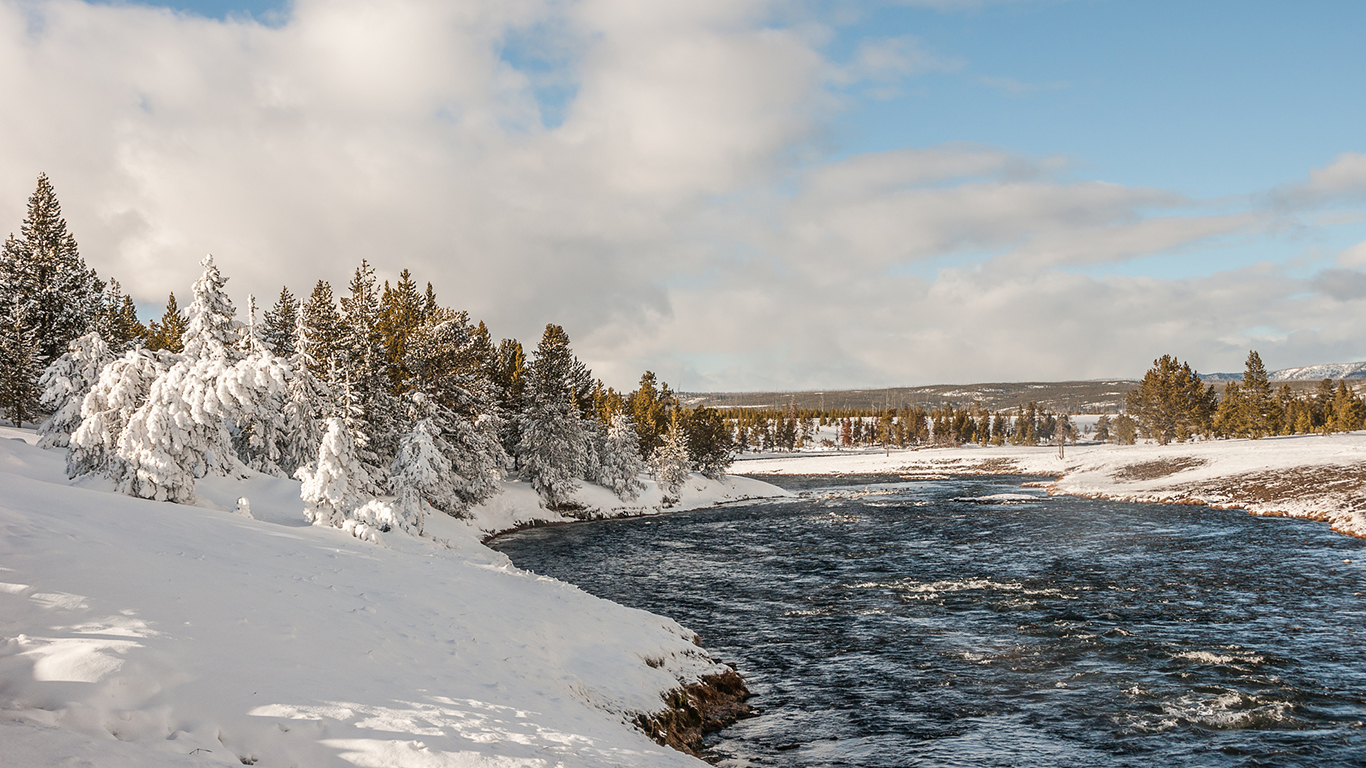
48. Wyoming
> Value per acre: $1,558
> Total value: $97.0 billion (4th lowest)
> Total acres: 62.3 million (8th highest)
> GDP per capita: $61,091 (6th highest)
> Median home value: $209,500 (19th highest)
[in-text-ad]
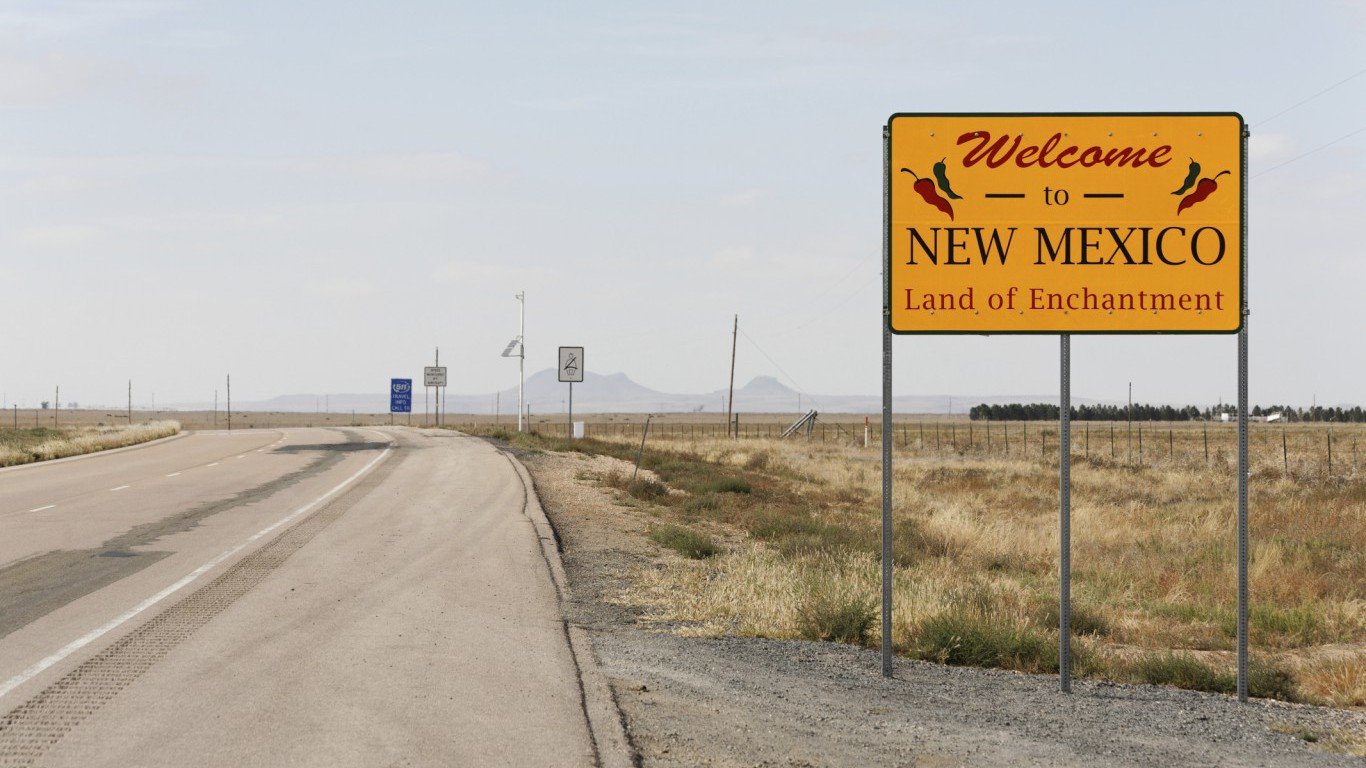
47. New Mexico
> Value per acre: $1,931
> Total value: $150.0 billion (11th lowest)
> Total acres: 77.7 million (4th highest)
> GDP per capita: $41,619 (12th lowest)
> Median home value: $167,500 (21st lowest)
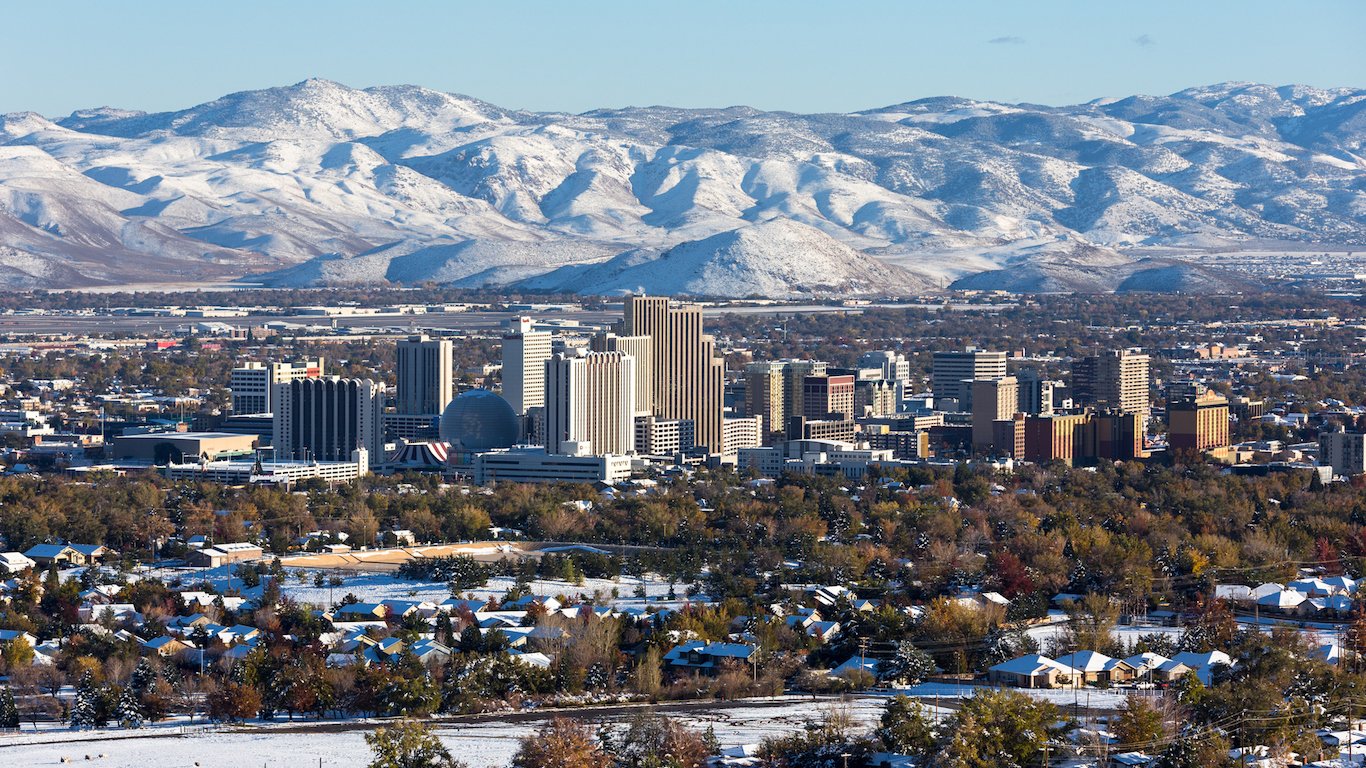
46. Nevada
> Value per acre: $2,116
> Total value: $149.0 billion (10th lowest)
> Total acres: 70.4 million (6th highest)
> GDP per capita: $44,812 (19th lowest)
> Median home value: $239,500 (15th highest)
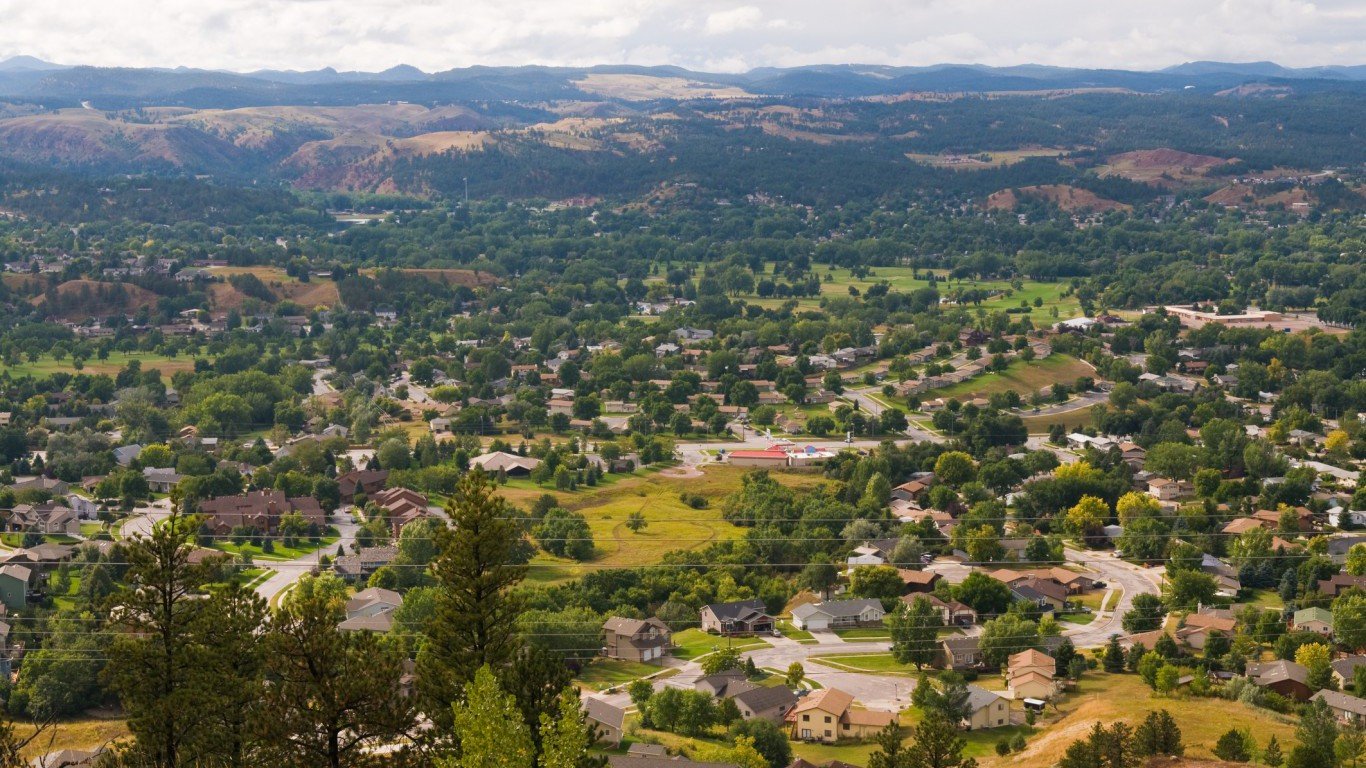
45. South Dakota
> Value per acre: $2,135
> Total value: $103.0 billion (5th lowest)
> Total acres: 48.2 million (15th highest)
> GDP per capita: $48,004 (24th highest)
> Median home value: $160,700 (17th lowest)
[in-text-ad-2]

44. Montana
> Value per acre: $2,283
> Total value: $213.0 billion (16th lowest)
> Total acres: 93.3 million (3rd highest)
> GDP per capita: $39,833 (10th lowest)
> Median home value: $217,200 (17th highest)
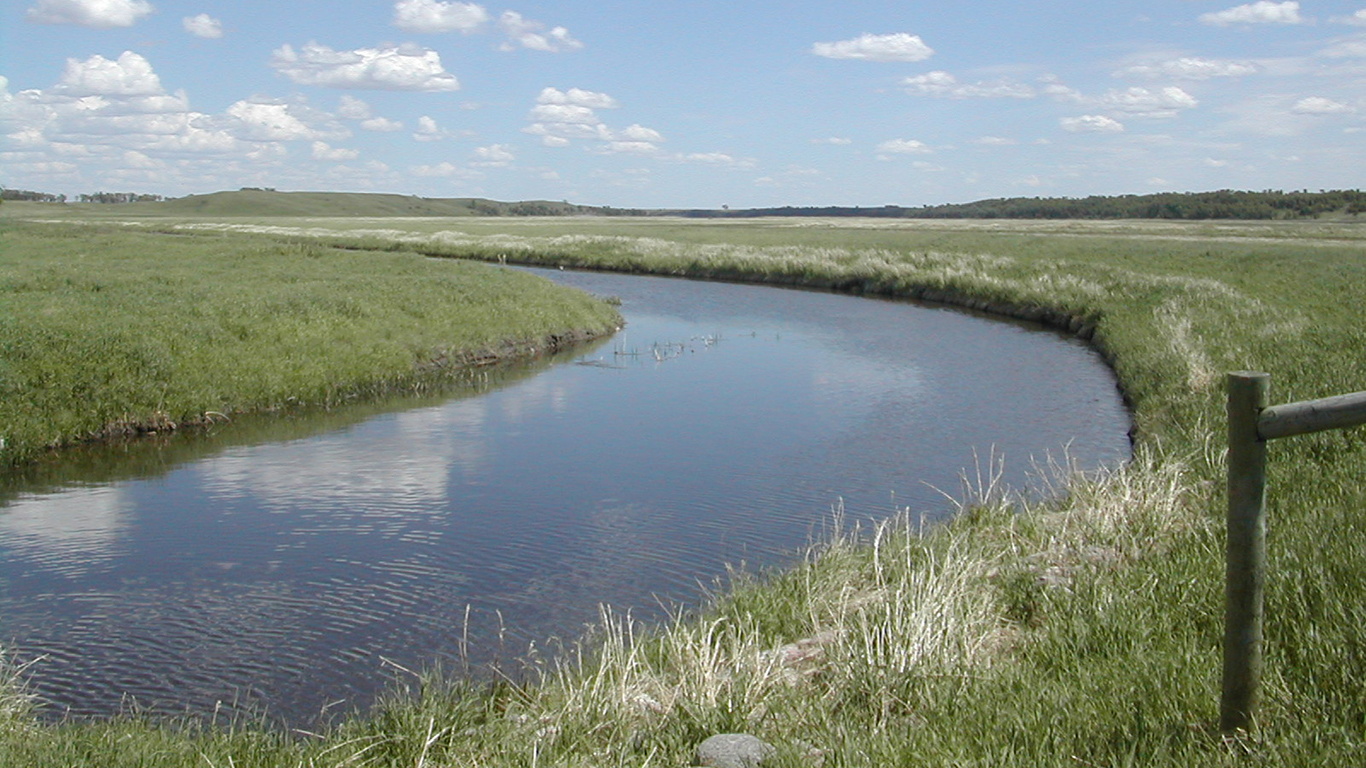
43. North Dakota
> Value per acre: $2,517
> Total value: $110.0 billion (6th lowest)
> Total acres: 43.7 million (18th highest)
> GDP per capita: $64,911 (3rd highest)
> Median home value: $184,100 (24th lowest)
[in-text-ad]
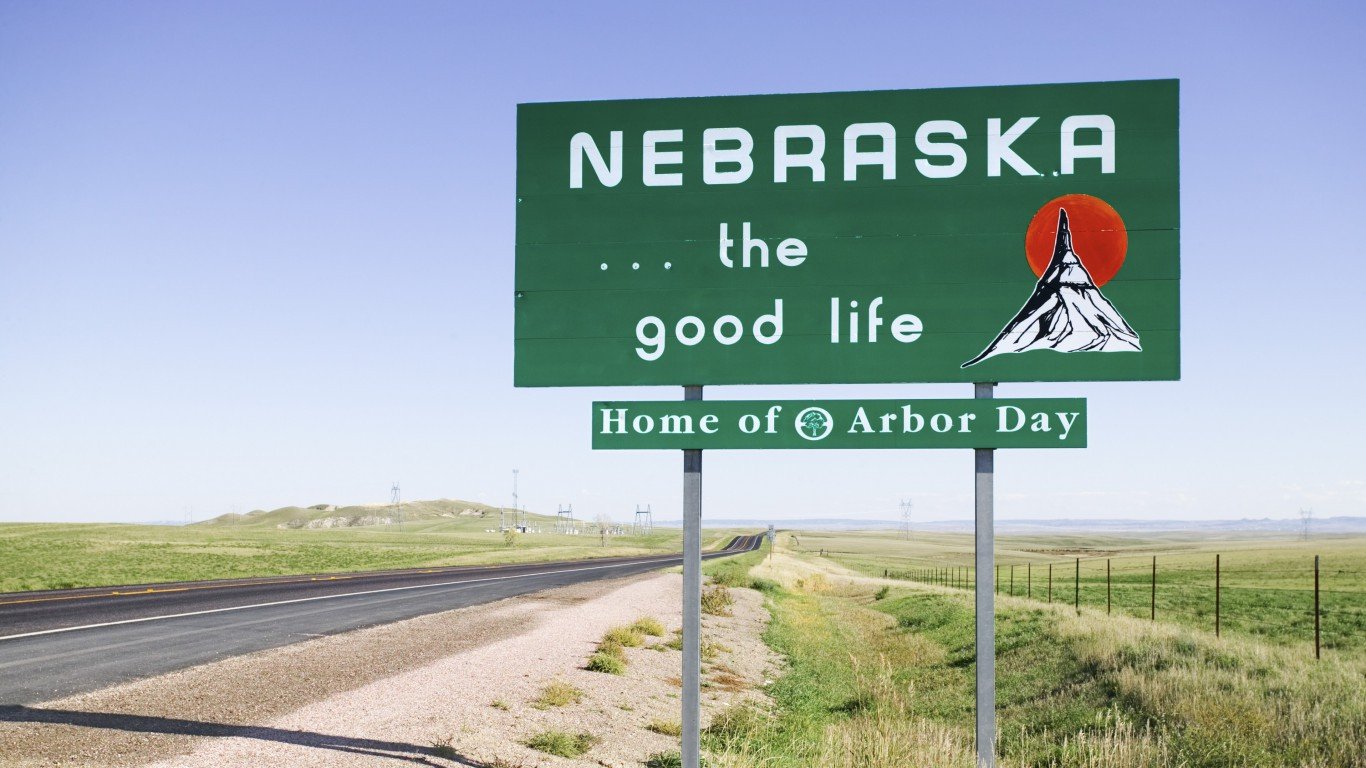
42. Nebraska
> Value per acre: $2,936
> Total value: $144.0 billion (9th lowest)
> Total acres: 49.1 million (14th highest)
> GDP per capita: $54,654 (13th highest)
> Median home value: $148,100 (12th lowest)
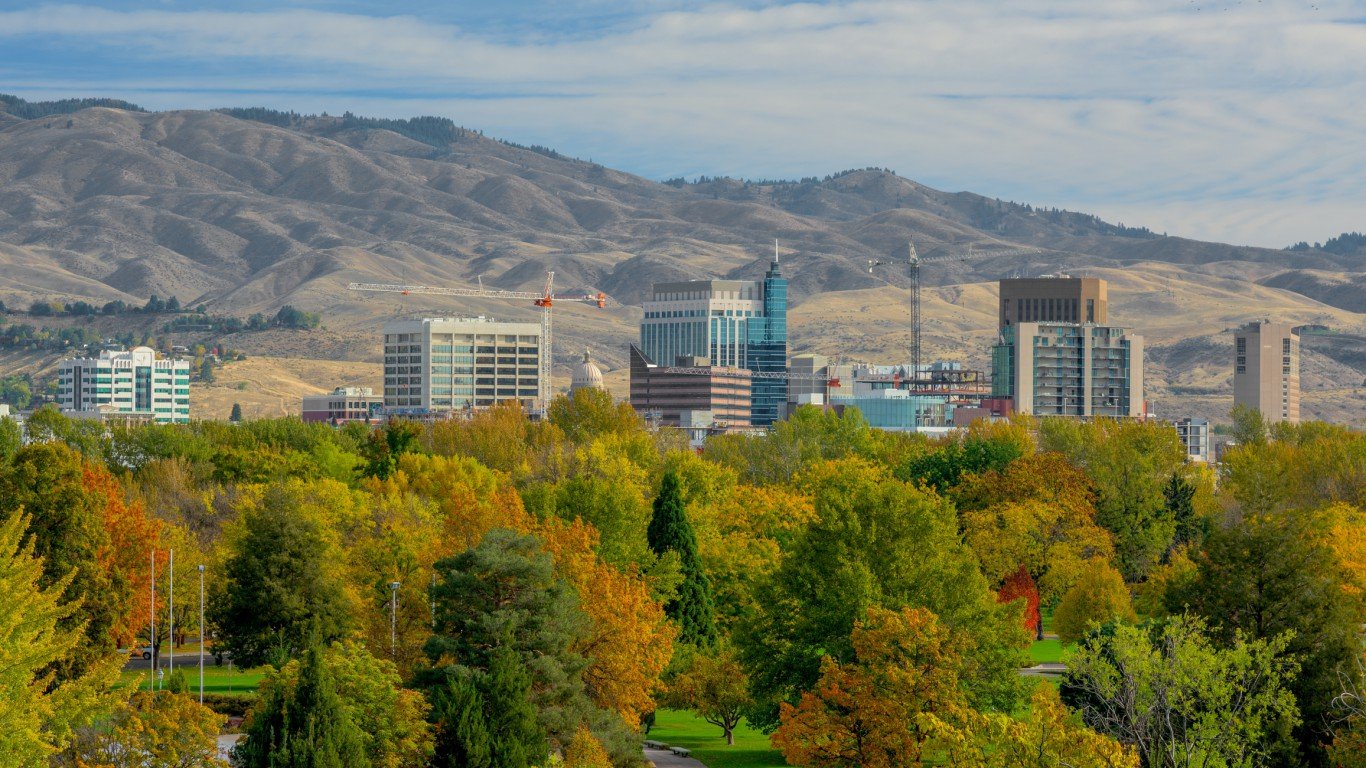
41. Idaho
> Value per acre: $3,435
> Total value: $182.0 billion (14th lowest)
> Total acres: 53.0 million (10th highest)
> GDP per capita: $36,441 (2nd lowest)
> Median home value: $189,400 (22nd highest)
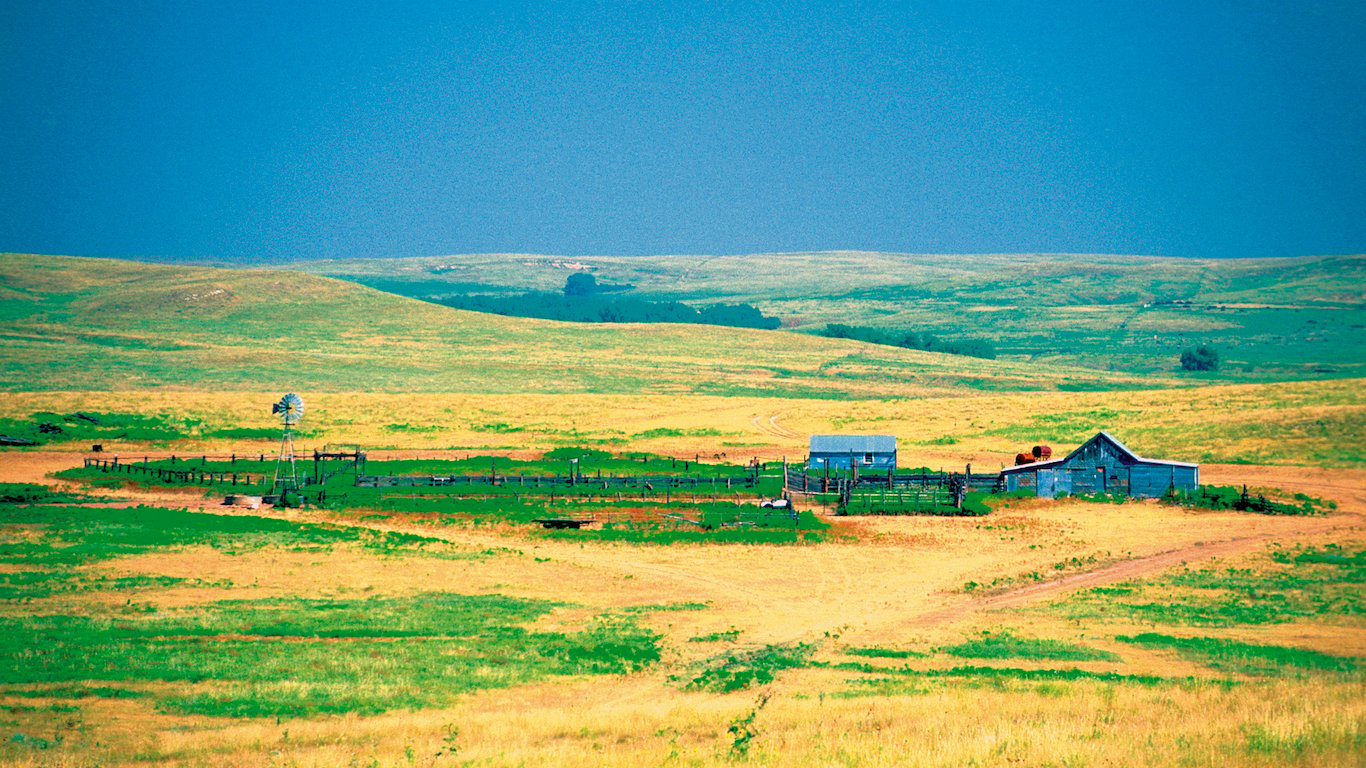
40. Kansas
> Value per acre: $4,220
> Total value: $220.0 billion (17th lowest)
> Total acres: 52.1 million (12th highest)
> GDP per capita: $47,435 (24th lowest)
> Median home value: $144,900 (10th lowest)
[in-text-ad-2]
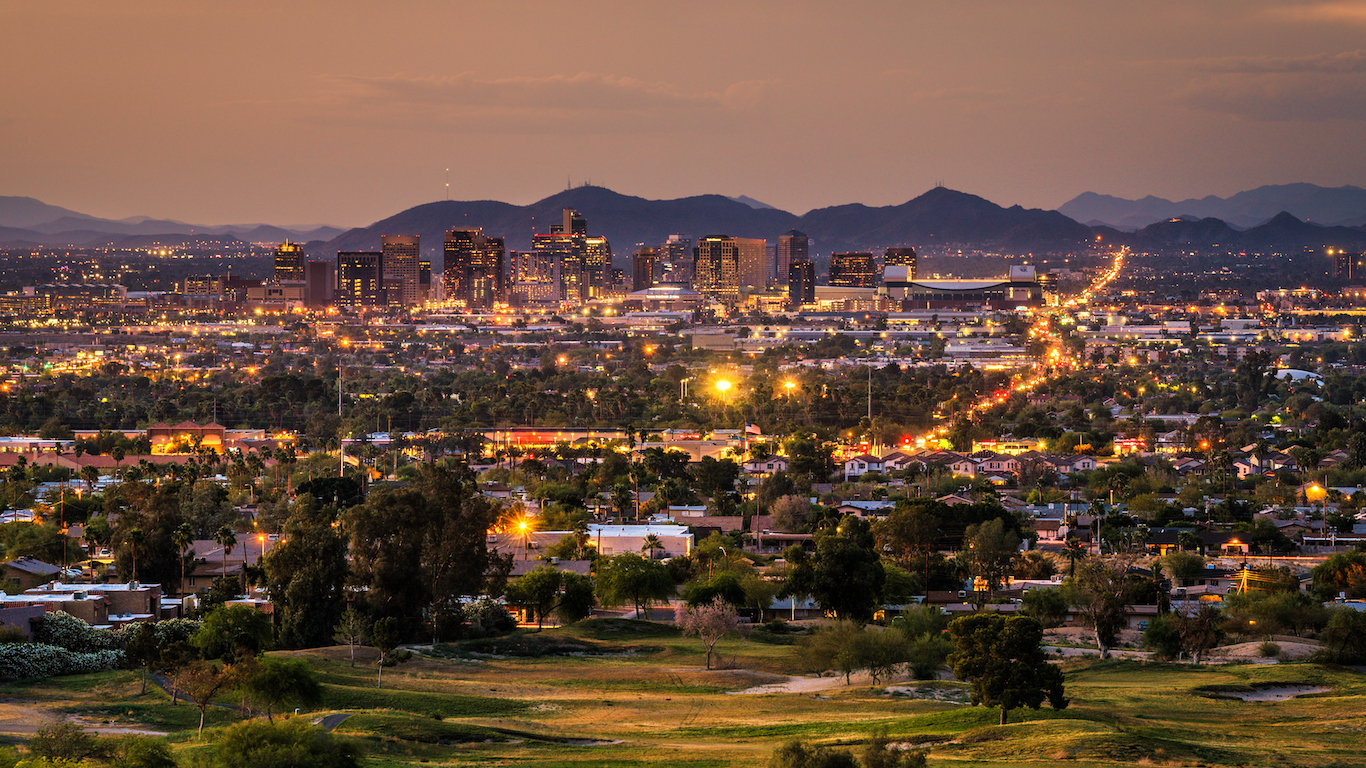
39. Arizona
> Value per acre: $4,328
> Total value: $315.0 billion (21st lowest)
> Total acres: 72.8 million (5th highest)
> GDP per capita: $39,583 (9th lowest)
> Median home value: $205,900 (20th highest)
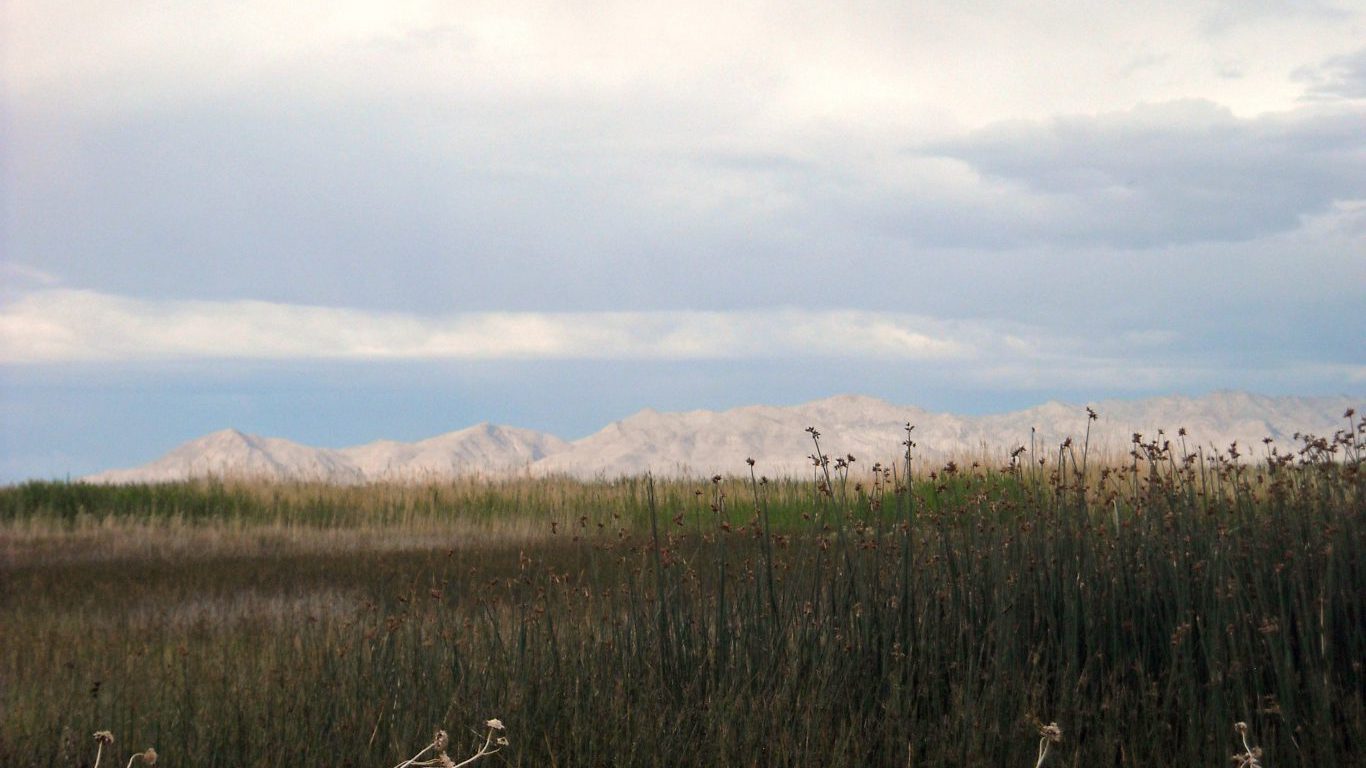
38. Utah
> Value per acre: $4,664
> Total value: $247.0 billion (20th lowest)
> Total acres: 53.0 million (11th highest)
> GDP per capita: $45,493 (21st lowest)
> Median home value: $250,300 (12th highest)
[in-text-ad]
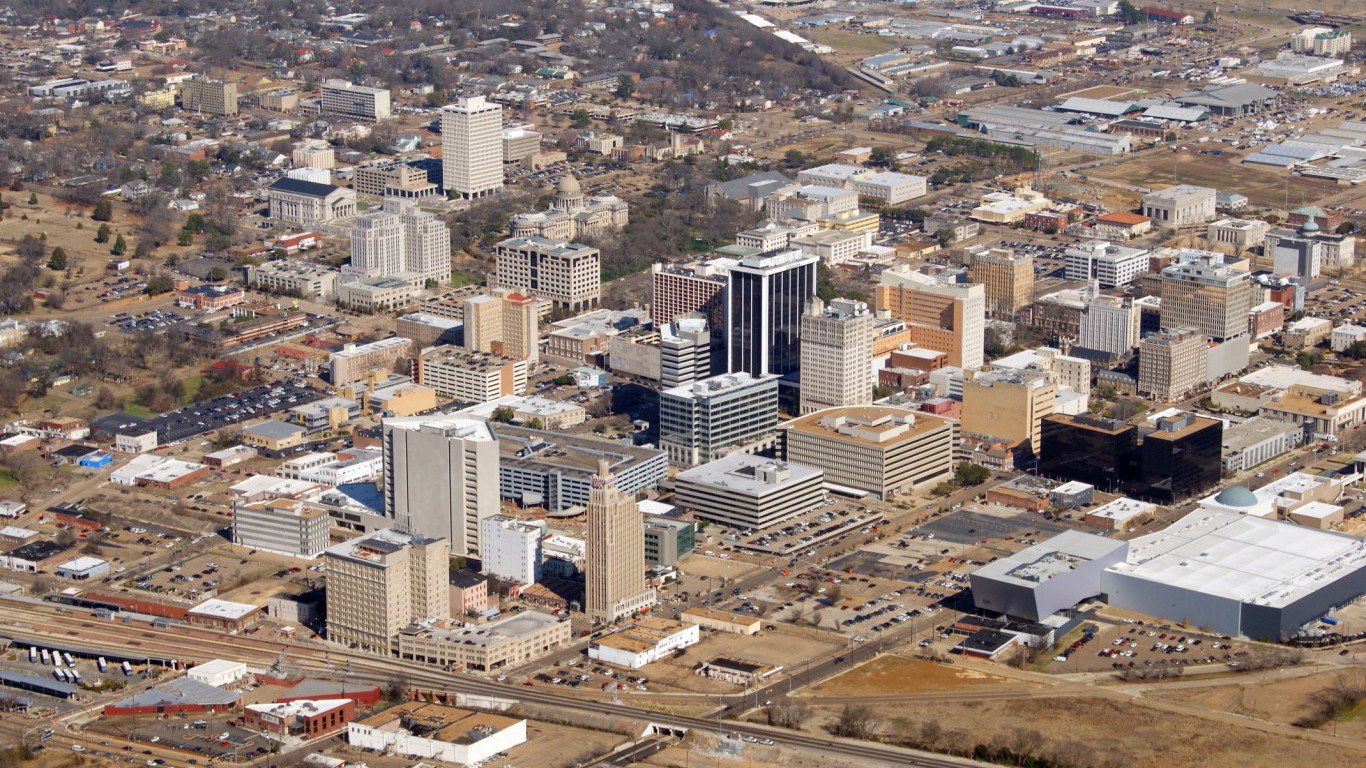
37. Mississippi
> Value per acre: $5,565
> Total value: $166.0 billion (13th lowest)
> Total acres: 29.8 million (19th lowest)
> GDP per capita: $32,447 (the lowest)
> Median home value: $113,900 (the lowest)

36. Maine
> Value per acre: $6,142
> Total value: $122.0 billion (8th lowest)
> Total acres: 19.9 million (11th lowest)
> GDP per capita: $39,521 (8th lowest)
> Median home value: $184,700 (24th highest)
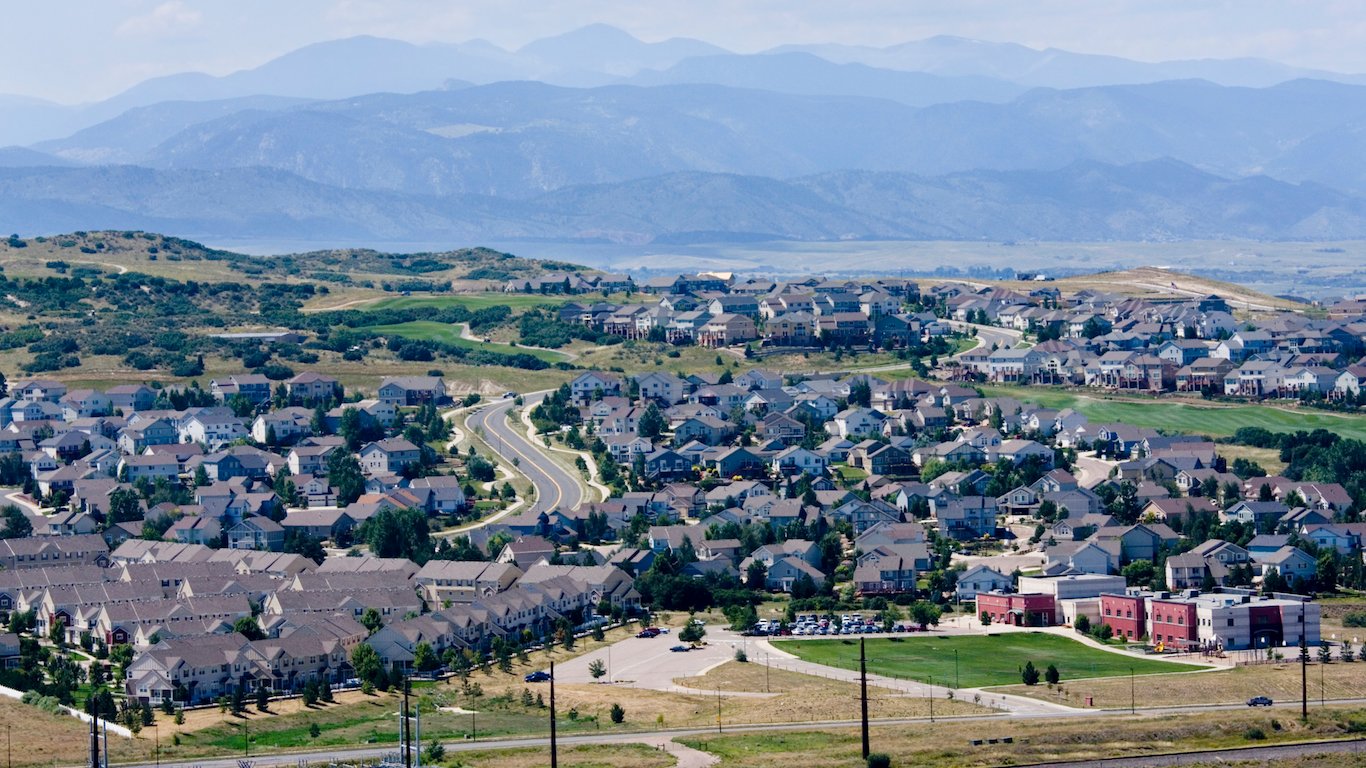
35. Colorado
> Value per acre: $6,462
> Total value: $429.0 billion (16th highest)
> Total acres: 66.4 million (7th highest)
> GDP per capita: $54,026 (14th highest)
> Median home value: $314,200 (4th highest)
[in-text-ad-2]
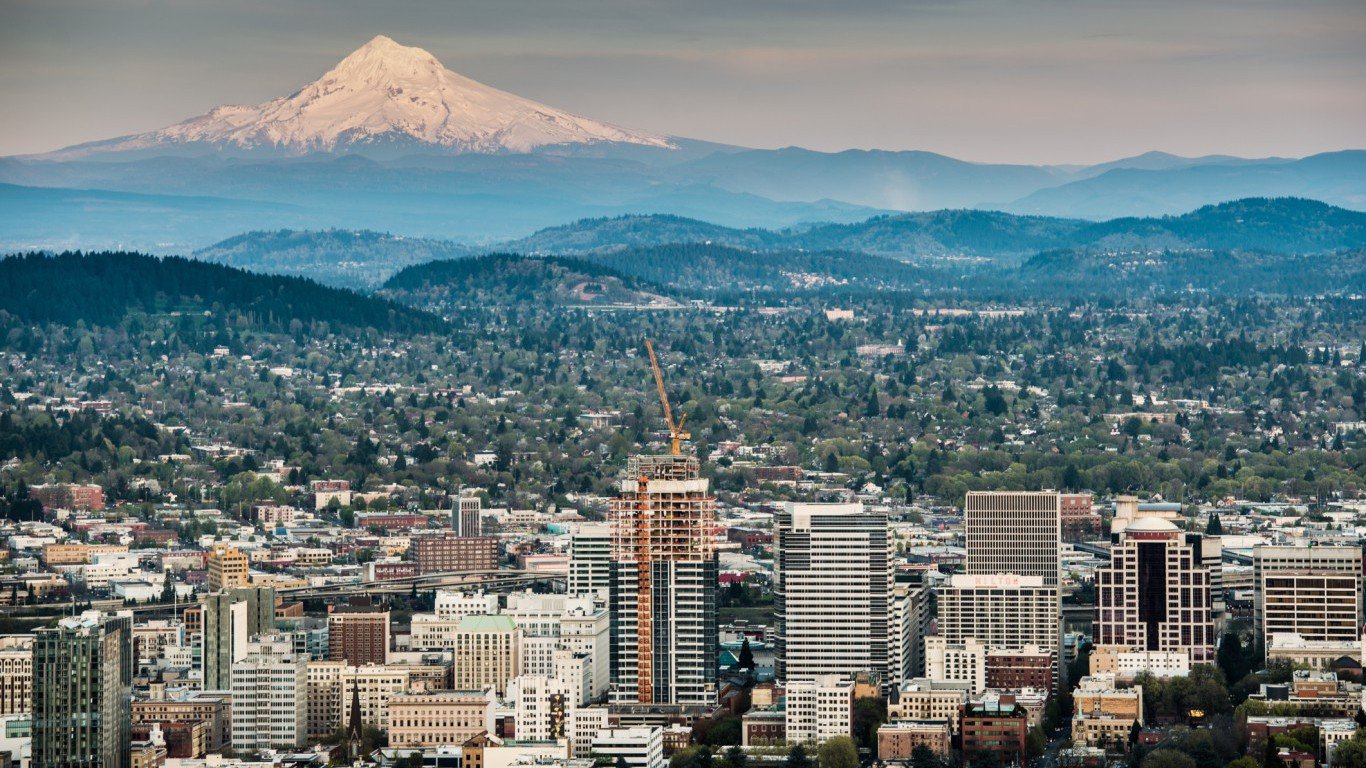
34. Oregon
> Value per acre: $6,503
> Total value: $400.0 billion (18th highest)
> Total acres: 61.5 million (9th highest)
> GDP per capita: $51,312 (20th highest)
> Median home value: $287,100 (8th highest)
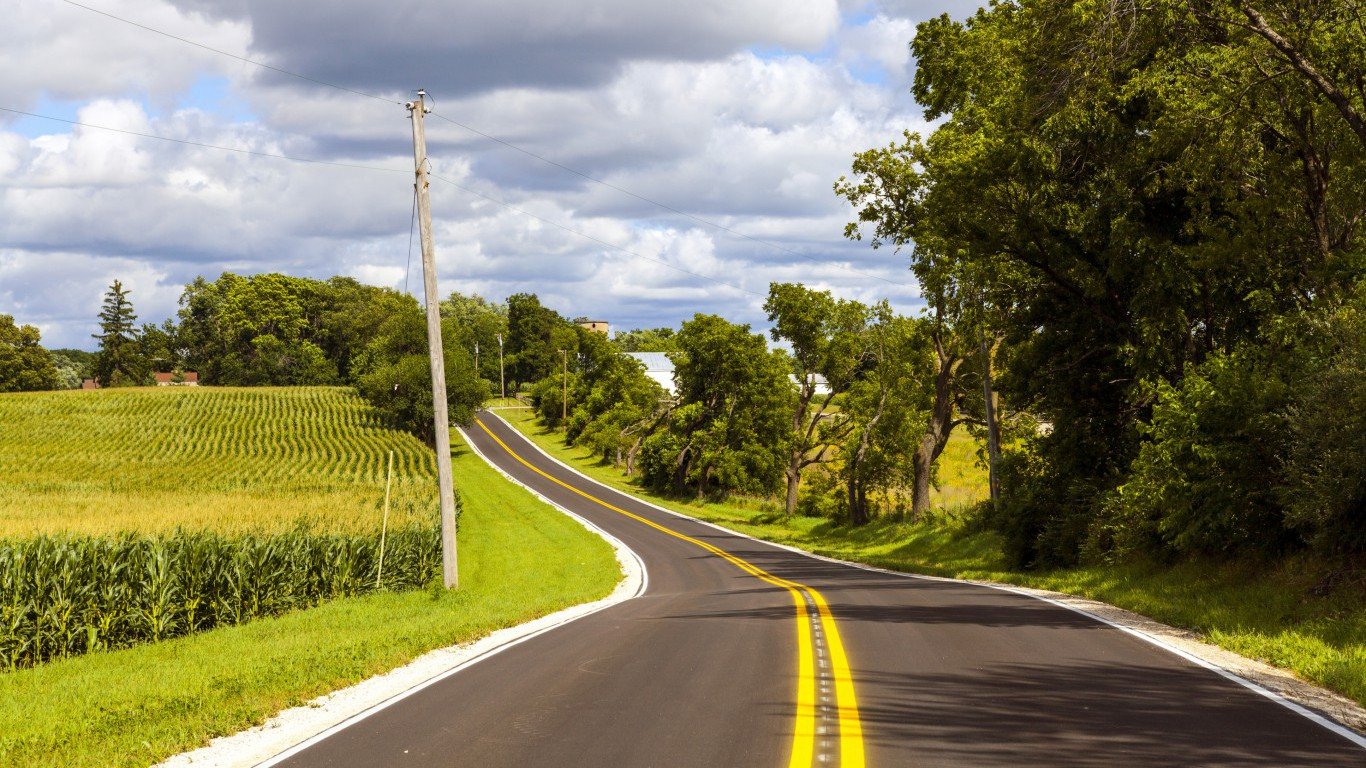
33. Iowa
> Value per acre: $6,590
> Total value: $235.0 billion (19th lowest)
> Total acres: 35.7 million (22nd highest)
> GDP per capita: $52,284 (17th highest)
> Median home value: $142,300 (9th lowest)
[in-text-ad]

32. Arkansas
> Value per acre: $6,739
> Total value: $224.0 billion (18th lowest)
> Total acres: 33.2 million (23rd lowest)
> GDP per capita: $36,714 (3rd lowest)
> Median home value: $123,300 (3rd lowest)

31. Kentucky
> Value per acre: $7,209
> Total value: $183.0 billion (15th lowest)
> Total acres: 25.4 million (14th lowest)
> GDP per capita: $39,277 (7th lowest)
> Median home value: $135,600 (6th lowest)

30. Missouri
> Value per acre: $7,233
> Total value: $318.0 billion (22nd lowest)
> Total acres: 44.0 million (16th highest)
> GDP per capita: $43,036 (13th lowest)
> Median home value: $151,400 (13th lowest)
[in-text-ad-2]

29. Oklahoma
> Value per acre: $7,364
> Total value: $323.0 billion (23rd lowest)
> Total acres: 43.9 million (17th highest)
> GDP per capita: $44,535 (17th lowest)
> Median home value: $132,200 (4th lowest)

28. Vermont
> Value per acre: $7,439
> Total value: $44.0 billion (the lowest)
> Total acres: 5.9 million (7th lowest)
> GDP per capita: $44,831 (20th lowest)
> Median home value: $223,700 (16th highest)
[in-text-ad]
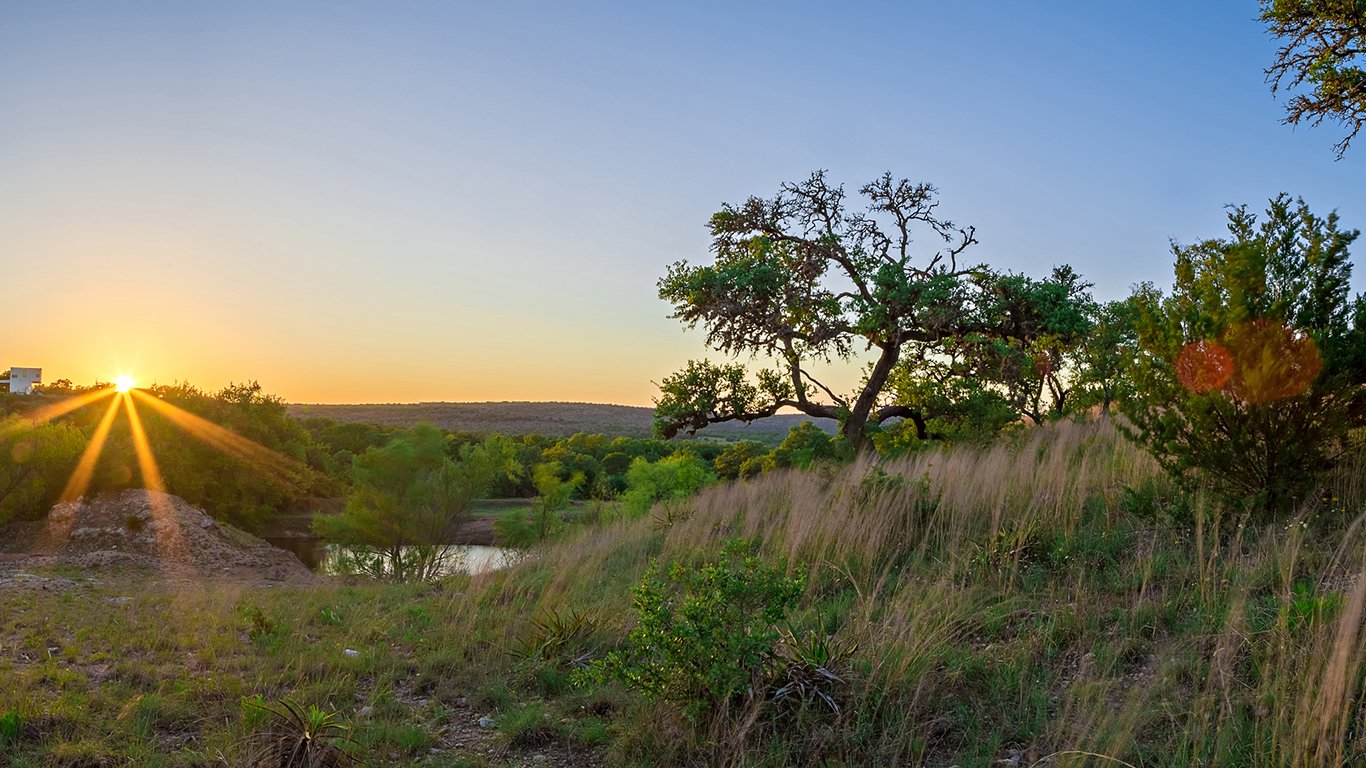
27. Texas
> Value per acre: $7,542
> Total value: $1266.0 billion (2nd highest)
> Total acres: 167.9 million (the highest)
> GDP per capita: $53,737 (15th highest)
> Median home value: $161,500 (18th lowest)

26. Minnesota
> Value per acre: $8,191
> Total value: $416.0 billion (17th highest)
> Total acres: 50.8 million (13th highest)
> GDP per capita: $54,805 (12th highest)
> Median home value: $211,800 (18th highest)
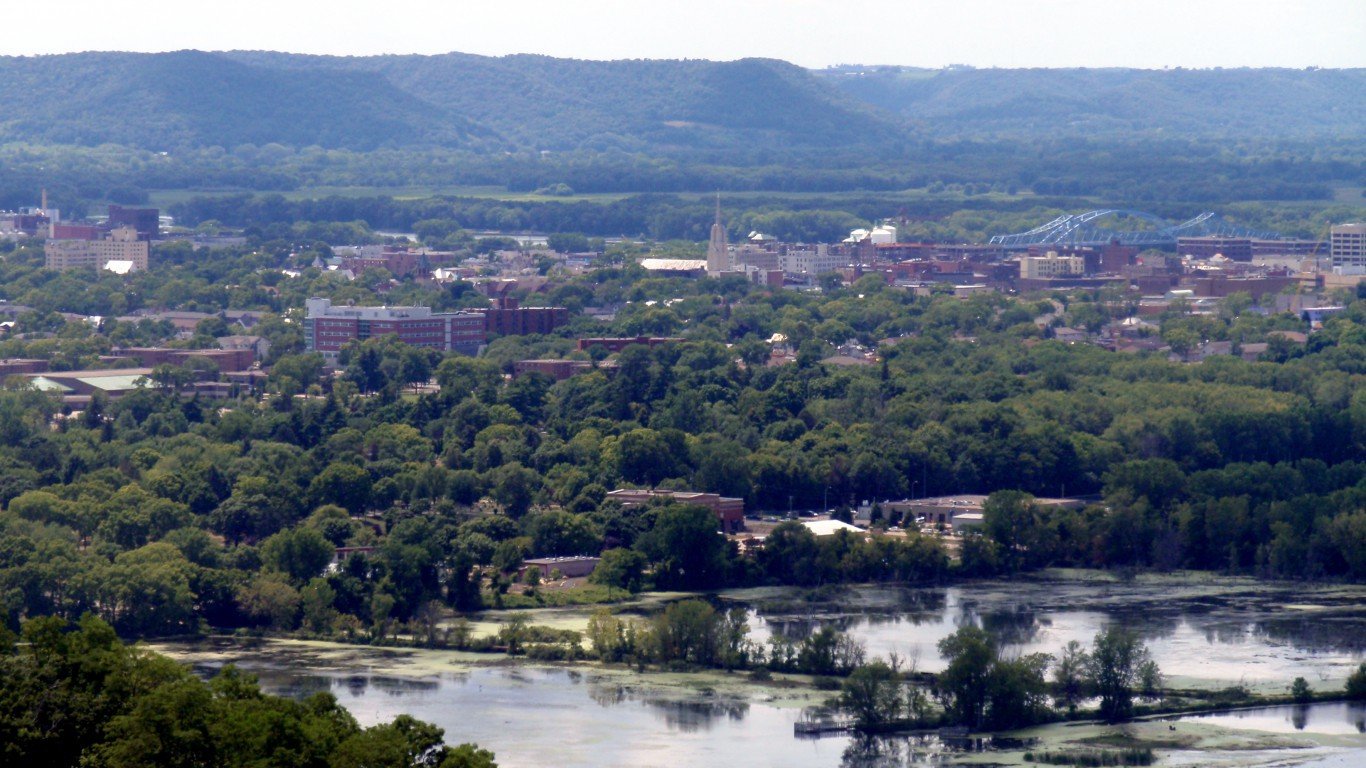
25. Wisconsin
> Value per acre: $9,924
> Total value: $344.0 billion (24th highest)
> Total acres: 34.7 million (24th lowest)
> GDP per capita: $48,666 (21st highest)
> Median home value: $173,200 (22nd lowest)
[in-text-ad-2]
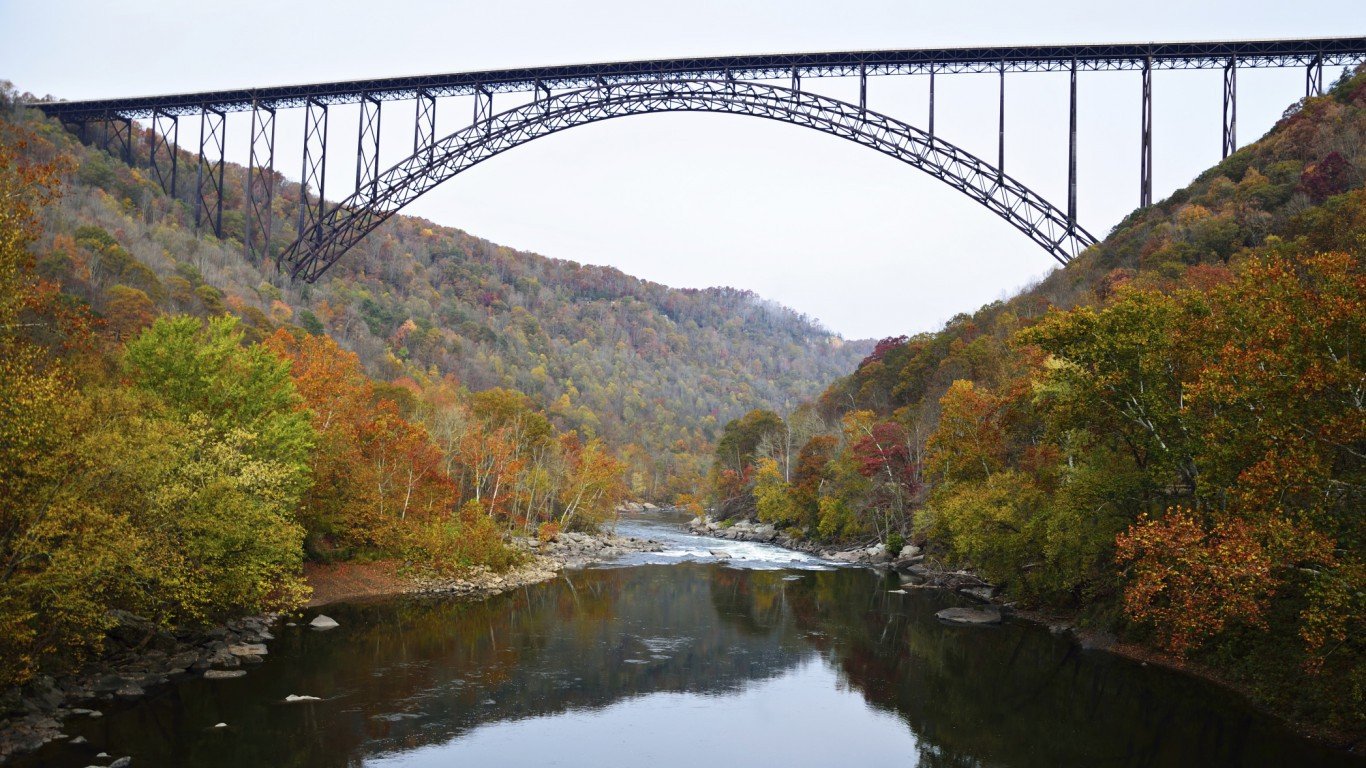
24. West Virginia
> Value per acre: $10,537
> Total value: $162.0 billion (12th lowest)
> Total acres: 15.4 million (9th lowest)
> GDP per capita: $37,353 (4th lowest)
> Median home value: $117,900 (2nd lowest)
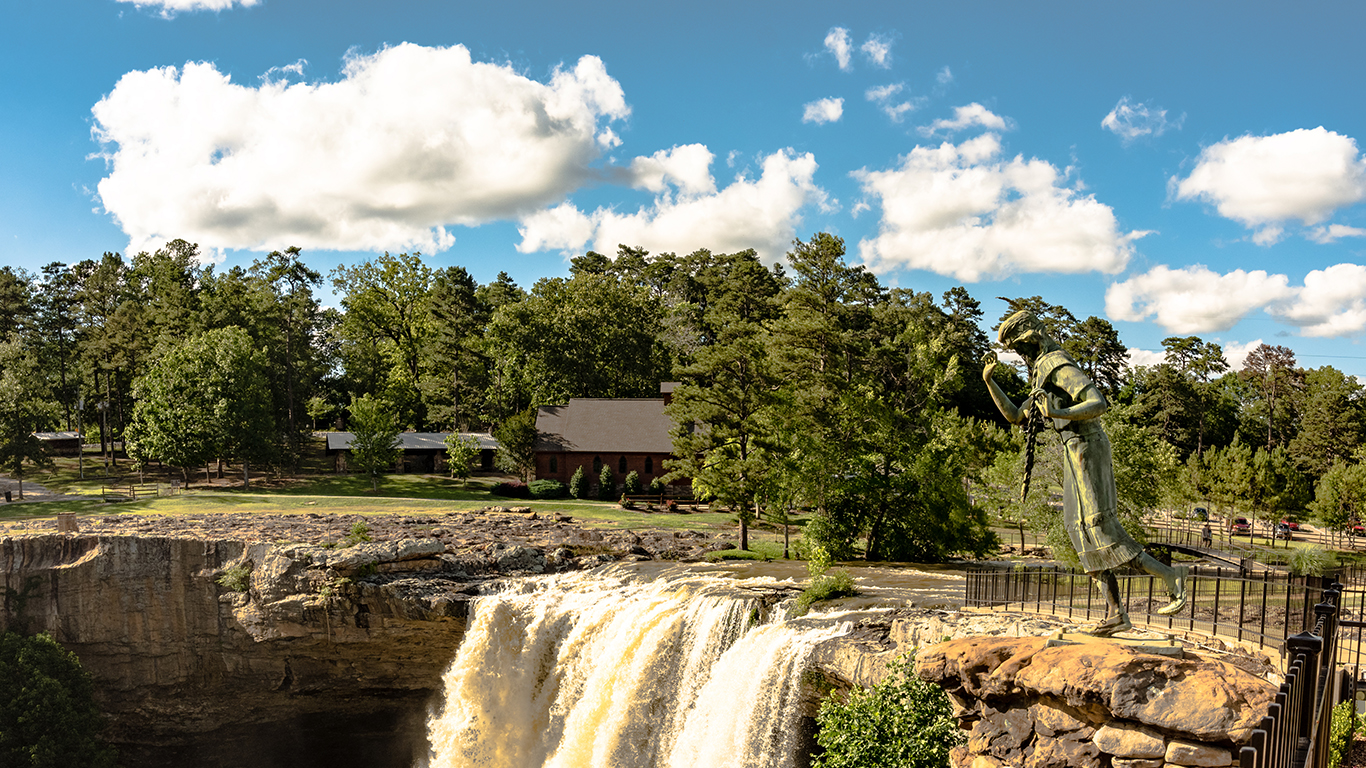
23. Alabama
> Value per acre: $12,356
> Total value: $400.0 billion (18th highest)
> Total acres: 32.4 million (22nd lowest)
> GDP per capita: $37,508 (5th lowest)
> Median home value: $136,200 (7th lowest)
[in-text-ad]
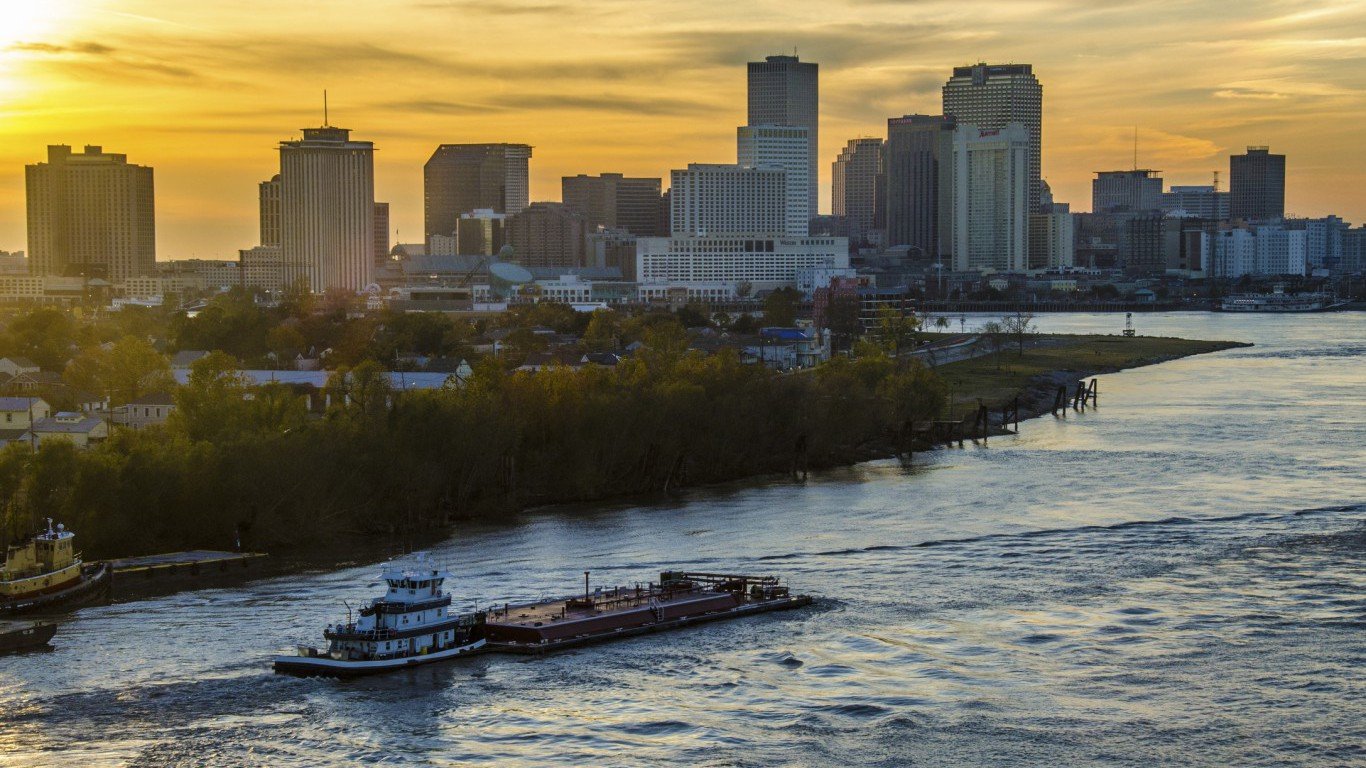
22. Louisiana
> Value per acre: $12,908
> Total value: $354.0 billion (23rd highest)
> Total acres: 27.4 million (17th lowest)
> GDP per capita: $44,372 (16th lowest)
> Median home value: $158,000 (16th lowest)

21. Georgia
> Value per acre: $14,242
> Total value: $528.0 billion (12th highest)
> Total acres: 37.1 million (20th highest)
> GDP per capita: $45,925 (22nd lowest)
> Median home value: $166,800 (20th lowest)

20. Tennessee
> Value per acre: $14,411
> Total value: $380.0 billion (22nd highest)
> Total acres: 26.4 million (16th lowest)
> GDP per capita: $44,348 (15th lowest)
> Median home value: $157,700 (15th lowest)
[in-text-ad-2]

19. North Carolina
> Value per acre: $16,230
> Total value: $506.0 billion (14th highest)
> Total acres: 31.2 million (21st lowest)
> GDP per capita: $44,706 (18th lowest)
> Median home value: $165,400 (19th lowest)

18. Washington
> Value per acre: $16,752
> Total value: $716.0 billion (10th highest)
> Total acres: 42.7 million (19th highest)
> GDP per capita: $59,333 (8th highest)
> Median home value: $306,400 (6th highest)
[in-text-ad]

17. Indiana
> Value per acre: $16,903
> Total value: $387.0 billion (21st highest)
> Total acres: 22.9 million (12th lowest)
> GDP per capita: $46,427 (23rd lowest)
> Median home value: $134,800 (5th lowest)

16. South Carolina
> Value per acre: $17,610
> Total value: $339.0 billion (24th lowest)
> Total acres: 19.3 million (10th lowest)
> GDP per capita: $37,637 (6th lowest)
> Median home value: $153,900 (14th lowest)

15. New Hampshire
> Value per acre: $19,840
> Total value: $114.0 billion (7th lowest)
> Total acres: 5.7 million (6th lowest)
> GDP per capita: $52,509 (16th highest)
> Median home value: $251,100 (11th highest)
[in-text-ad-2]

14. Virginia
> Value per acre: $21,921
> Total value: $555.0 billion (11th highest)
> Total acres: 25.3 million (13th lowest)
> GDP per capita: $52,124 (18th highest)
> Median home value: $264,000 (10th highest)

13. Illinois
> Value per acre: $23,492
> Total value: $833.0 billion (9th highest)
> Total acres: 35.5 million (23rd highest)
> GDP per capita: $55,102 (11th highest)
> Median home value: $186,500 (23rd highest)
[in-text-ad]
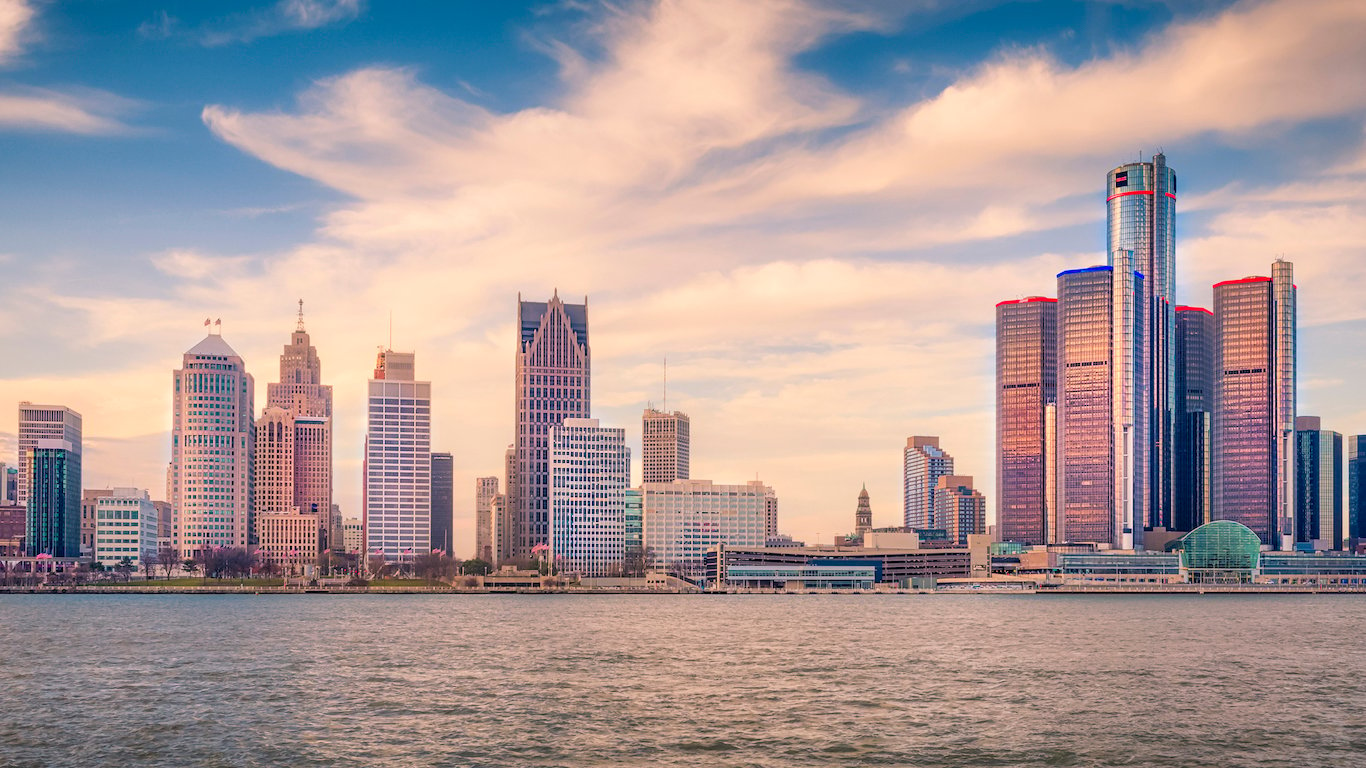
12. Michigan
> Value per acre: $23,765
> Total value: $865.0 billion (7th highest)
> Total acres: 36.4 million (21st highest)
> GDP per capita: $44,201 (14th lowest)
> Median home value: $147,100 (11th lowest)

11. Florida
> Value per acre: $28,961
> Total value: $1021.0 billion (4th highest)
> Total acres: 35.3 million (24th highest)
> GDP per capita: $39,842 (11th lowest)
> Median home value: $197,700 (21st highest)
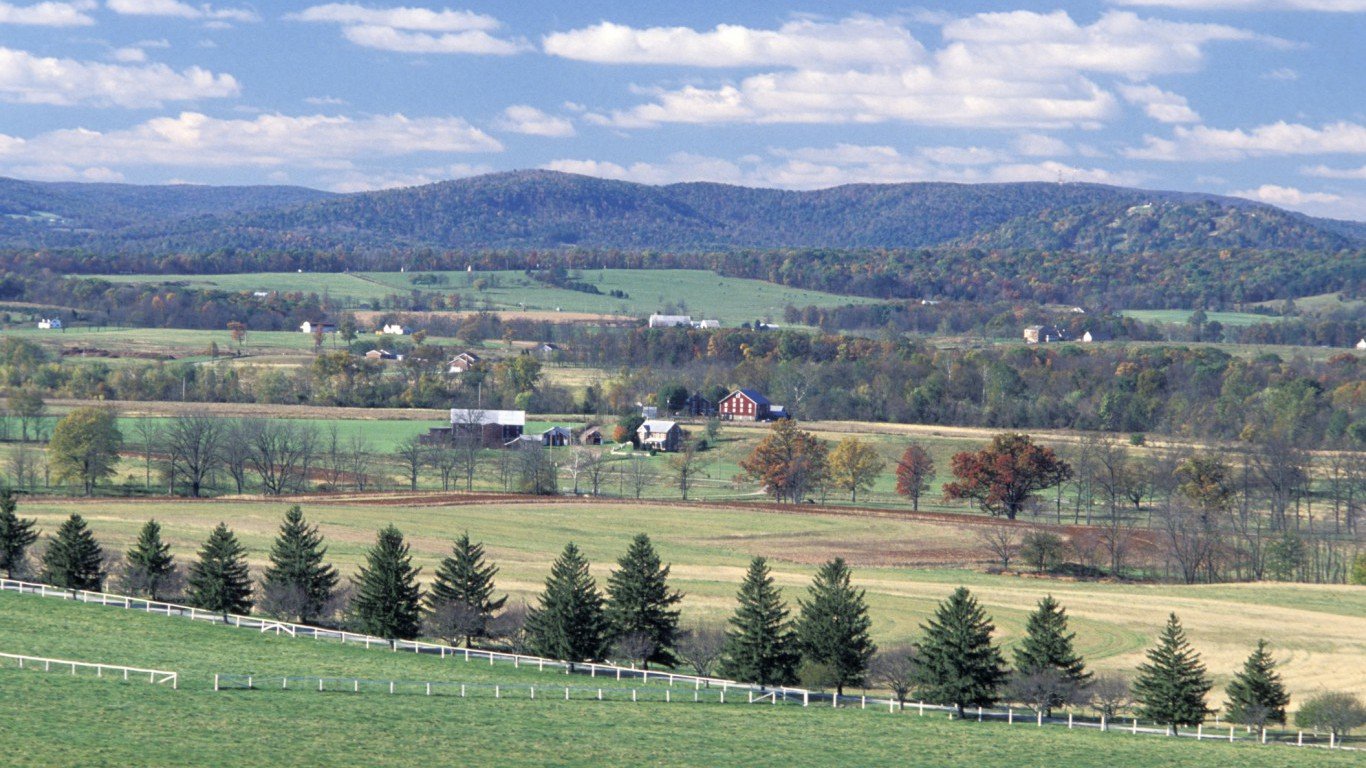
10. Pennsylvania
> Value per acre: $31,923
> Total value: $914.0 billion (6th highest)
> Total acres: 28.6 million (18th lowest)
> GDP per capita: $51,841 (19th highest)
> Median home value: $174,100 (23rd lowest)
[in-text-ad-2]

9. Ohio
> Value per acre: $32,077
> Total value: $838.0 billion (8th highest)
> Total acres: 26.1 million (15th lowest)
> GDP per capita: $48,188 (23rd highest)
> Median home value: $140,100 (8th lowest)
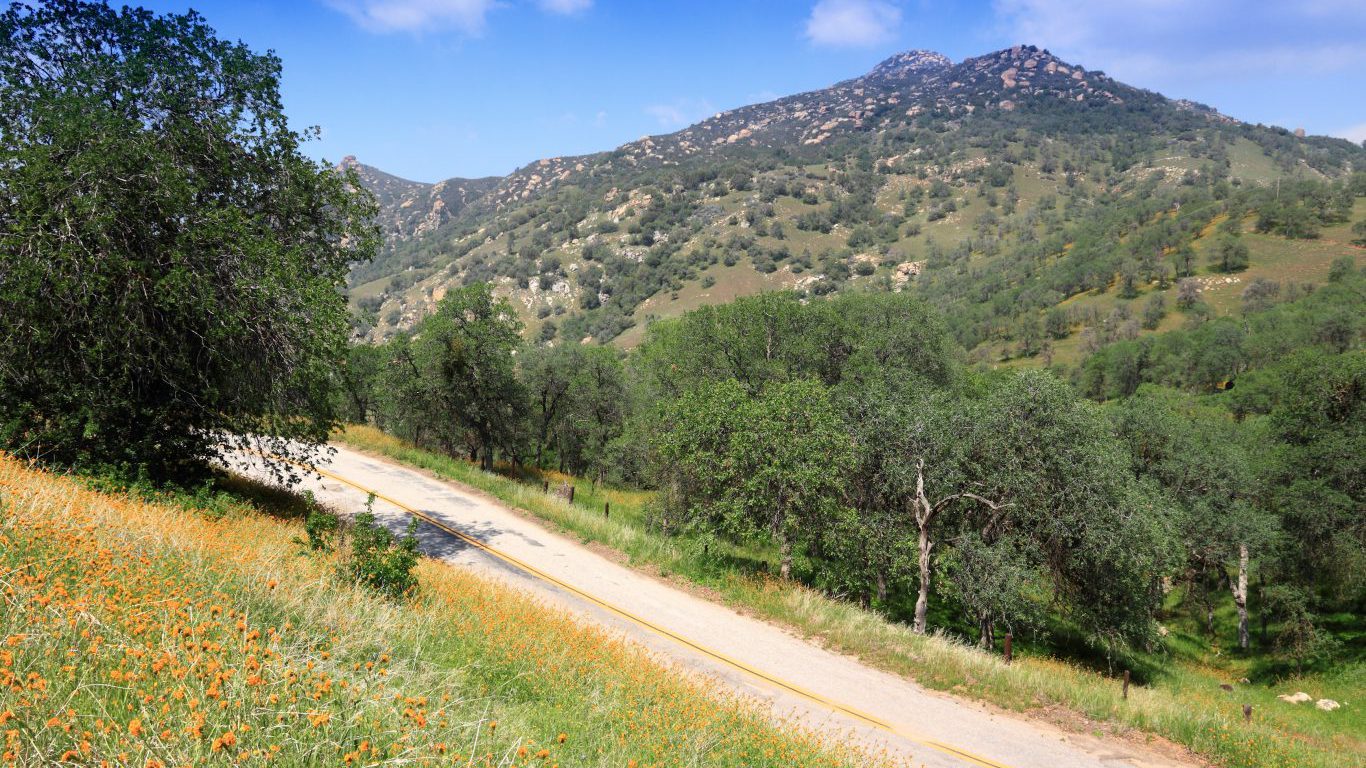
8. California
> Value per acre: $39,092
> Total value: $3905.0 billion (the highest)
> Total acres: 99.9 million (2nd highest)
> GDP per capita: $60,359 (7th highest)
> Median home value: $477,500 (the highest)
[in-text-ad]

7. New York
> Value per acre: $41,314
> Total value: $1245.0 billion (3rd highest)
> Total acres: 30.1 million (20th lowest)
> GDP per capita: $65,220 (2nd highest)
> Median home value: $302,400 (7th highest)
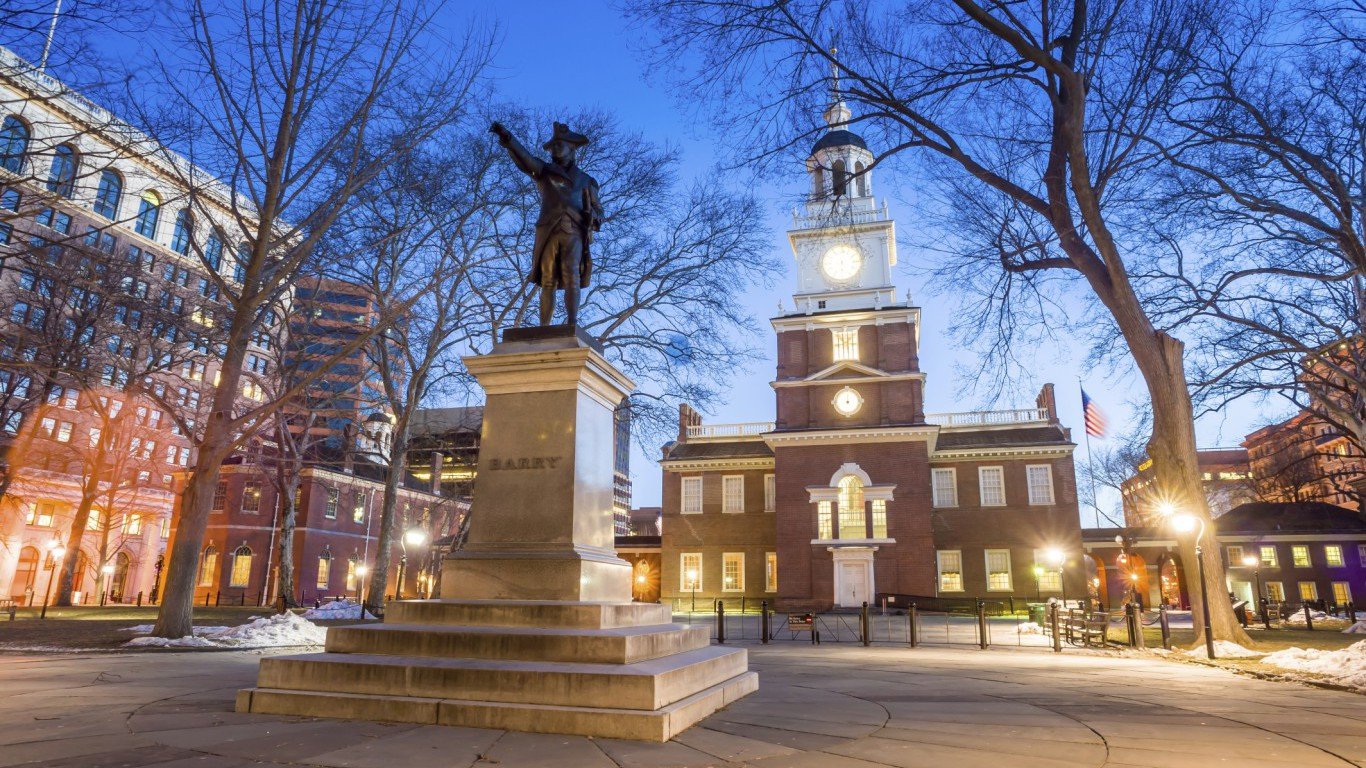
6. Delaware
> Value per acre: $57,692
> Total value: $72.0 billion (2nd lowest)
> Total acres: 1.2 million (2nd lowest)
> GDP per capita: $63,955 (4th highest)
> Median home value: $243,400 (14th highest)

5. Maryland
> Value per acre: $75,429
> Total value: $470.0 billion (15th highest)
> Total acres: 6.2 million (8th lowest)
> GDP per capita: $56,375 (10th highest)
> Median home value: $306,900 (5th highest)
[in-text-ad-2]

4. Massachusetts
> Value per acre: $102,214
> Total value: $517.0 billion (13th highest)
> Total acres: 5.1 million (5th lowest)
> GDP per capita: $66,500 (the highest)
> Median home value: $366,900 (2nd highest)
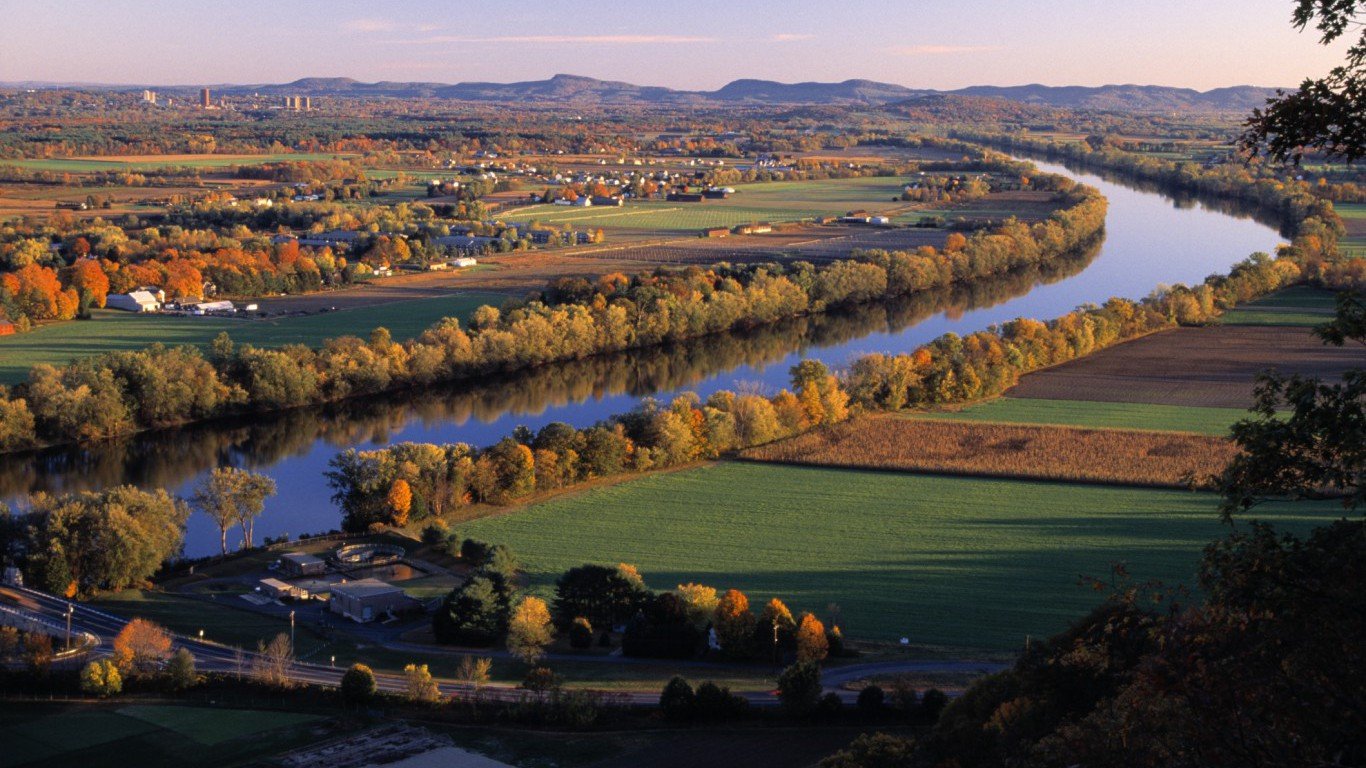
3. Connecticut
> Value per acre: $128,824
> Total value: $400.0 billion (18th highest)
> Total acres: 3.1 million (3rd lowest)
> GDP per capita: $62,633 (5th highest)
> Median home value: $274,600 (9th highest)
[in-text-ad]

2. Rhode Island
> Value per acre: $133,730
> Total value: $90.0 billion (3rd lowest)
> Total acres: 673,000 (the lowest)
> GDP per capita: $48,314 (22nd highest)
> Median home value: $247,700 (13th highest)

1. New Jersey
> Value per acre: $196,410
> Total value: $930.0 billion (5th highest)
> Total acres: 4.7 million (4th lowest)
> GDP per capita: $56,776 (9th highest)
> Median home value: $328,200 (3rd highest)
Essential Tips for Investing: Sponsored
A financial advisor can help you understand the advantages and disadvantages of investment properties. Finding a qualified financial advisor doesn’t have to be hard. SmartAsset’s free tool matches you with up to three financial advisors who serve your area, and you can interview your advisor matches at no cost to decide which one is right for you. If you’re ready to find an advisor who can help you achieve your financial goals, get started now.
Investing in real estate can diversify your portfolio. But expanding your horizons may add additional costs. If you’re an investor looking to minimize expenses, consider checking out online brokerages. They often offer low investment fees, helping you maximize your profit.
Thank you for reading! Have some feedback for us?
Contact the 24/7 Wall St. editorial team.
 24/7 Wall St.
24/7 Wall St. 24/7 Wall St.
24/7 Wall St. 24/7 Wall St.
24/7 Wall St. 24/7 Wall St.
24/7 Wall St.
